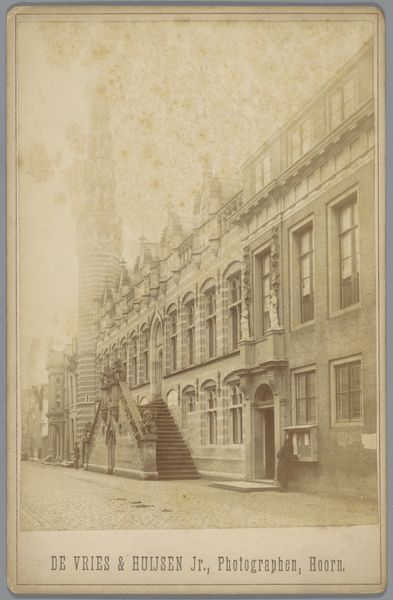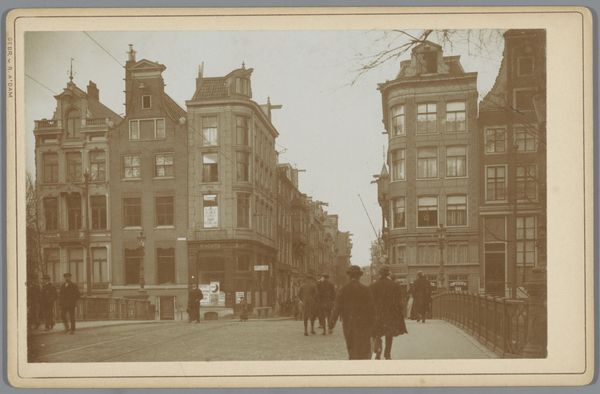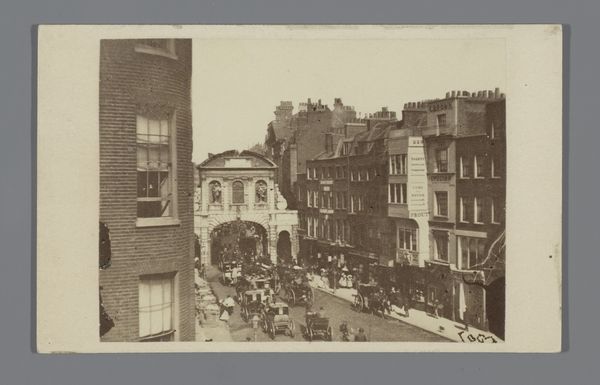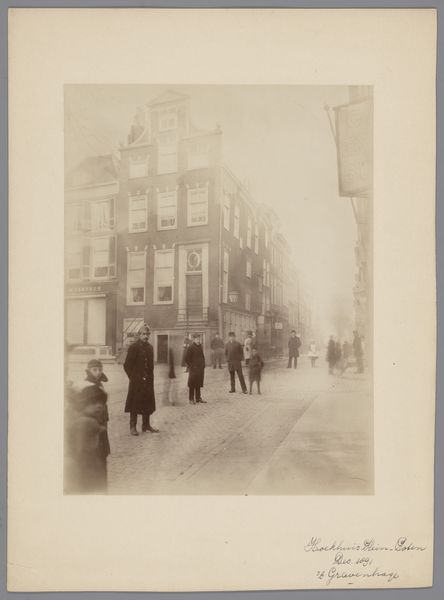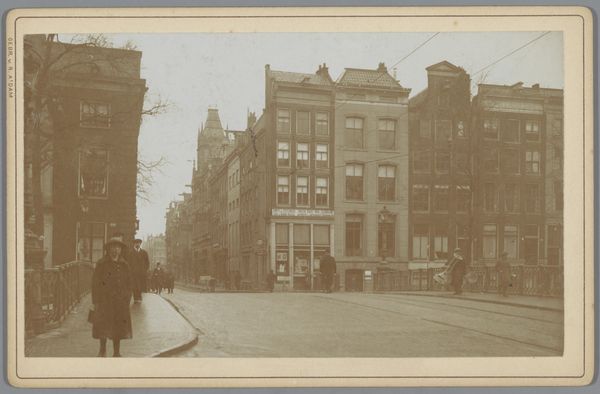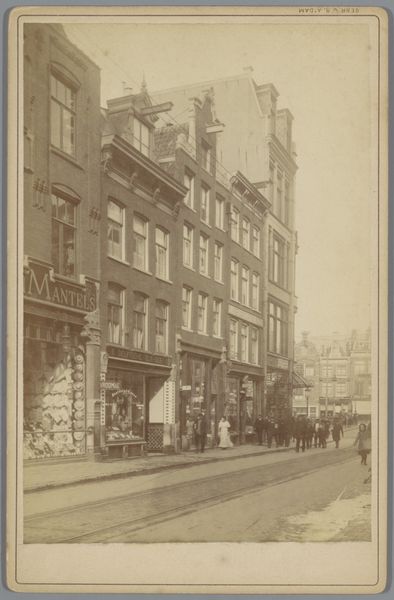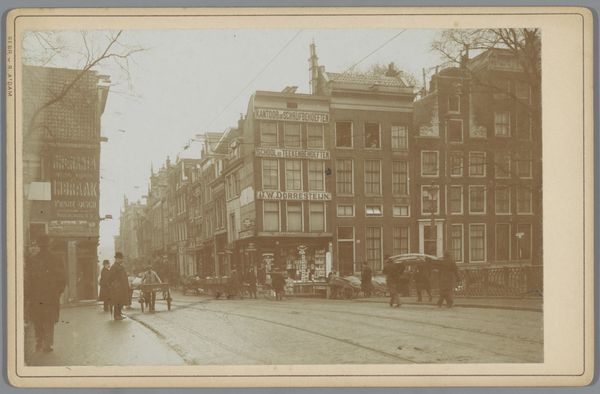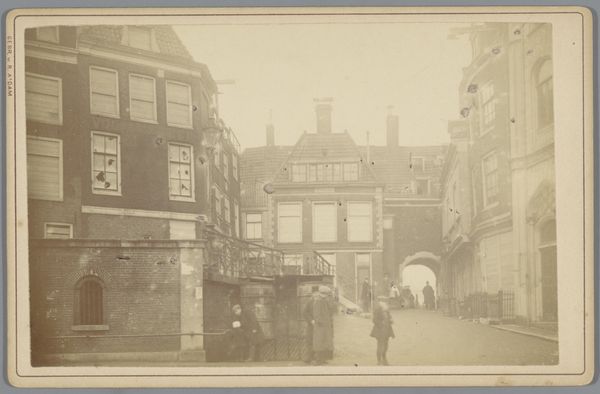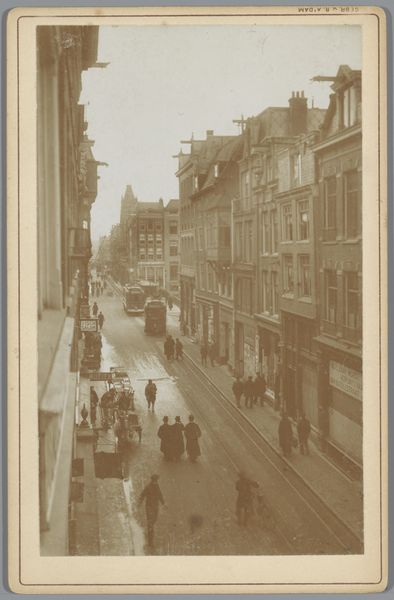
photography
#
pictorialism
#
photography
#
cityscape
#
street
Dimensions: height 149 mm, width 91 mm
Copyright: Rijks Museum: Open Domain
Editor: So, here we have a photograph, "Gezicht op de Keizersgracht en de Vijzelstraat in Amsterdam," created sometime between 1880 and 1900 by Gebr. van R. It’s a sepia-toned view of a street scene. The thing that immediately jumps out is the bare tree dominating the top of the frame, it seems very deliberate, almost staged, but I wonder why. What do you see in this photograph? Curator: I see a careful staging, indeed, to produce a sense of depth, but also the way that the framing is structured as it connects the consumer and vendor: that signage reading "most zelh handel", for instance, positioned just above those walking the street, who presumably are buying goods or are ready to engage in commerce further up the street. Editor: That’s interesting, I hadn’t considered that aspect. What about the pictorialist style, then? Does that point to how the materials were produced, how this photography operated? Curator: Absolutely. Pictorialism in photography valued artistic effect and strove for the look of painting or etching. We have to think about how photography democratized visual representation, making it accessible to more people and opening up new avenues for commerce and self-promotion. The production, therefore, and dissemination, challenge pre-existing hierarchies that designated certain styles of depiction as low- versus high-art practices. How might a scene like this one change as cameras themselves changed over the coming century? Editor: That's a great way to understand this artwork. I didn't really understand pictorialism until now. Curator: Precisely, by analyzing materials and production we see a much wider impact beyond the surface.
Comments
No comments
Be the first to comment and join the conversation on the ultimate creative platform.
